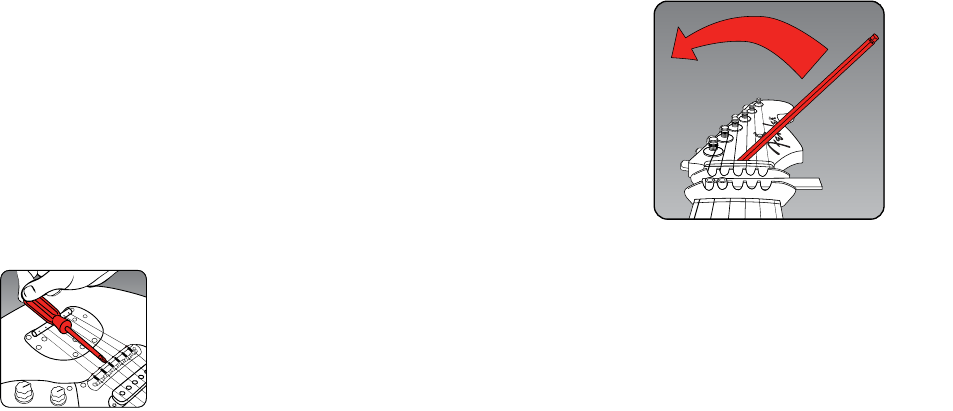
T
I
G
H
T
E
N
2. SETTING INTONA TION 3. TRUSS ROD
adjust the distance of the second-string saddle
back from the first saddle, using the gauge
of the second string as a measurement. For
example, if the second string is .011” (0.3
mm), you would move the second-string saddle
back .011” (0.3 mm) from the first saddle.
Move the third saddle back from the second
saddle using the gauge of the third string as a
measurement. The fourth-string saddle should
be set parallel with the second-string saddle.
Proceed with the fifth and sixth saddles with the
same method used for strings two and three.
The truss rod is the ingenious unseen
device inside the neck that counteracts the
bending force caused by string tension.
An ideally adjusted neck will have a
moderate amount of relief (curvature) in it
to accommodate the vibrating strings.
To adjust the truss rod, fasten a capo to the
first fret; then fret the sixth string (low E) at
the last fret. Then measure from the bottom
of the string to the top of the 8th fret using the
feeler gauge—the gap should be about .010”.
When you view the neck by sighting down it
from the body end toward the headstock, you
can see whether the neck is straight or bowed.
Fender guitars use two kinds of truss rod
adjustment mechanisms. One is accessible at
the headstock and is adjusted using an Allen
wrench; the other is accessible at the neck
joint and is adjusted using a Phillips head
screwdriver. For both types, here’s what to do:
Adjustment at headstock (Allen wrench):
If the neck curvature is too concave, (the
guitar in playing position, looking up the
neck towards the tuners) turn the truss
rod adjustment nut counterclockwise. If
23


















